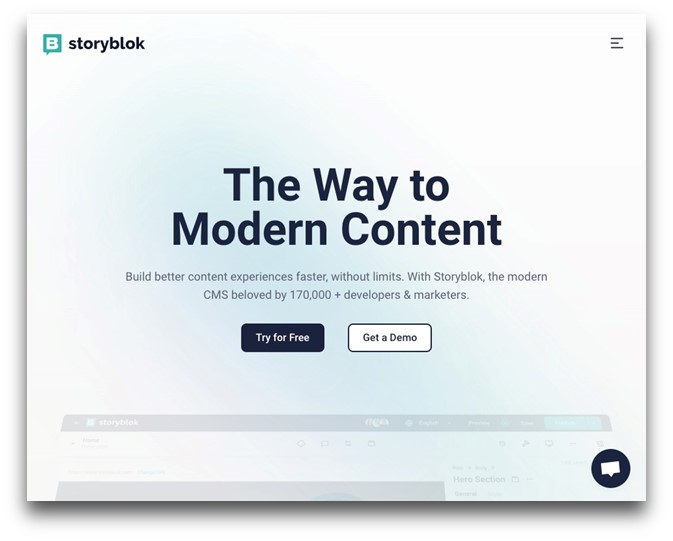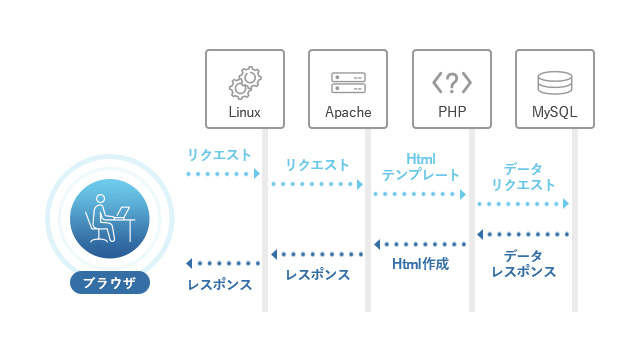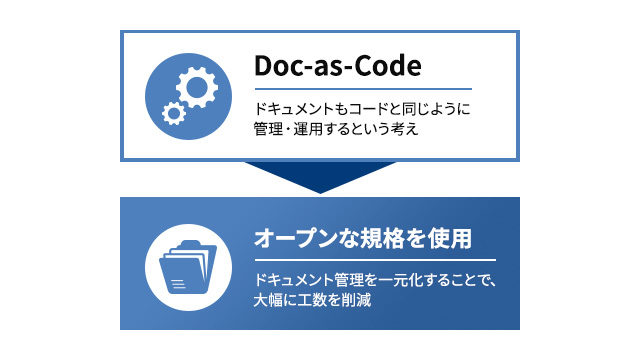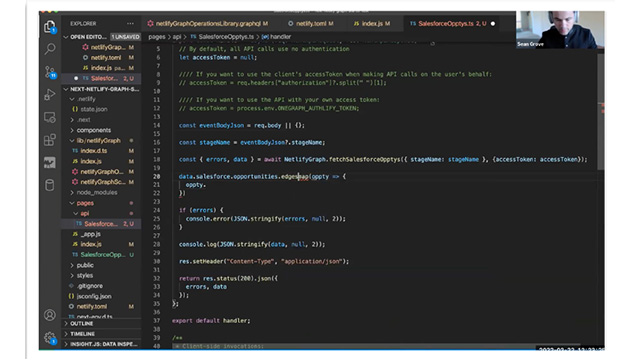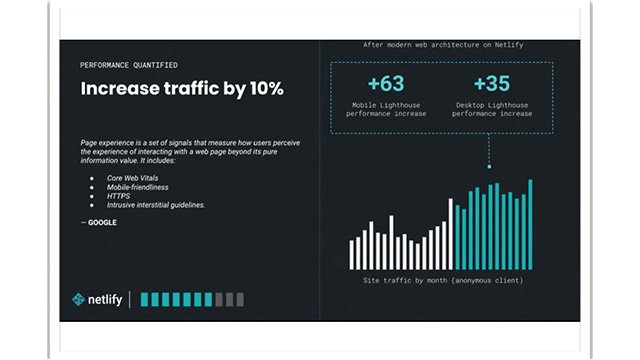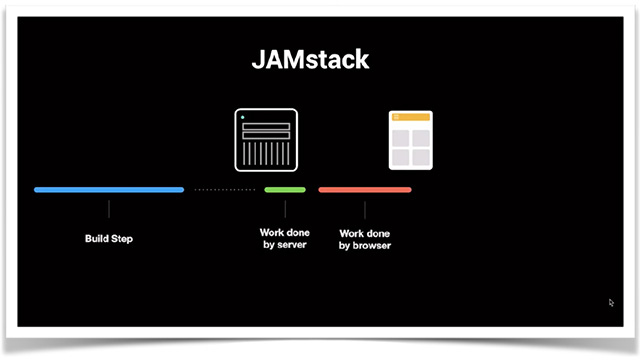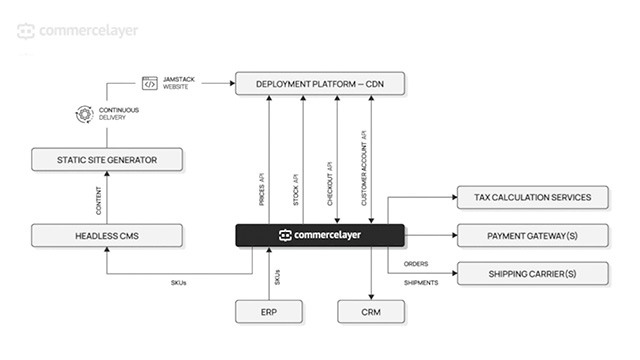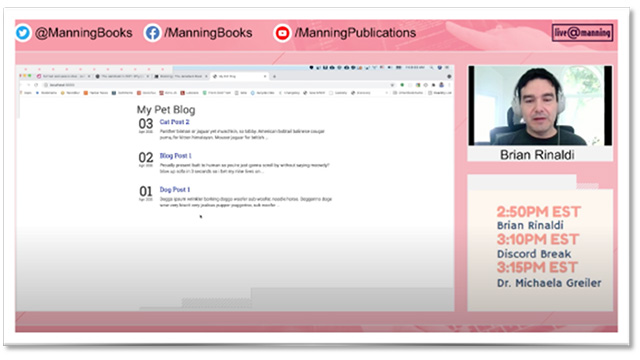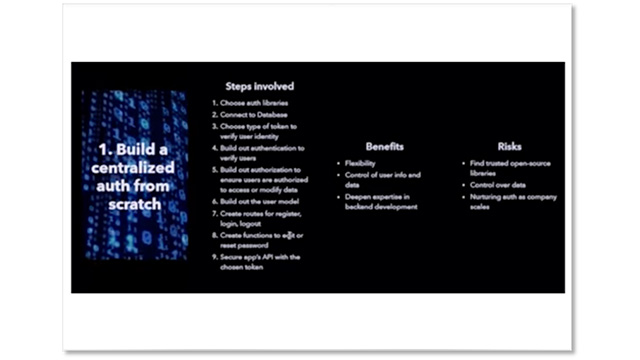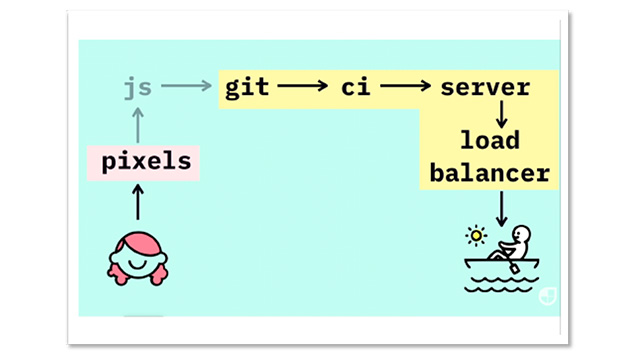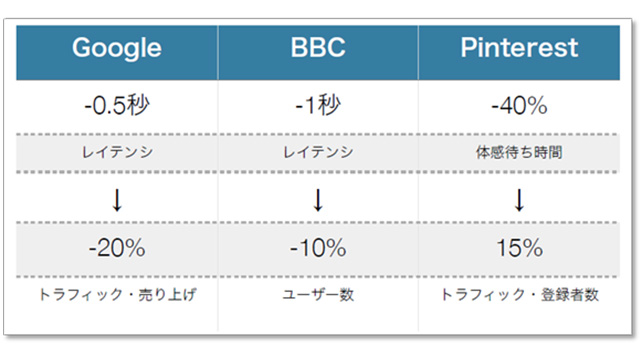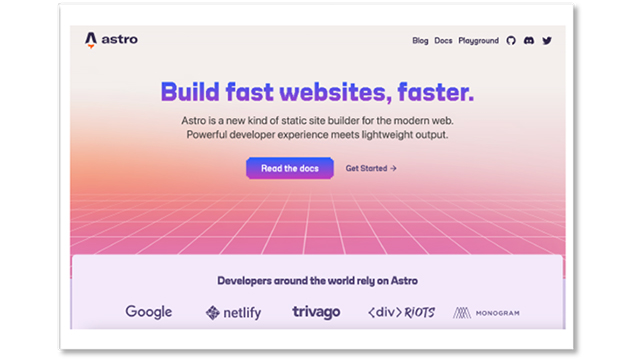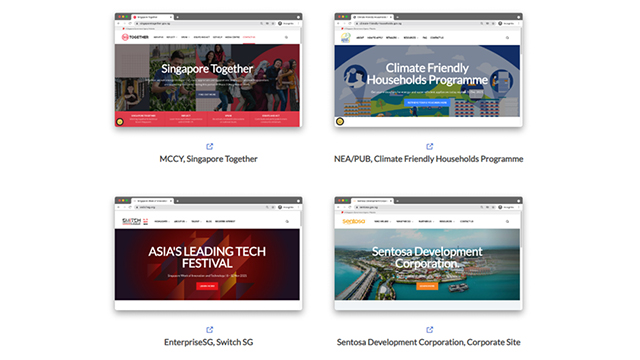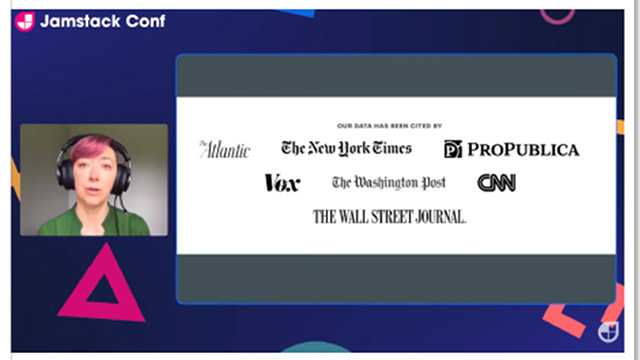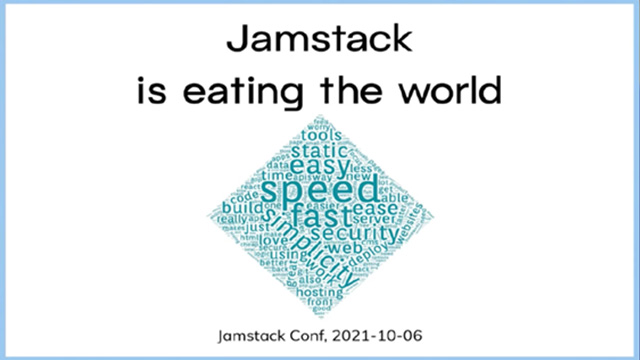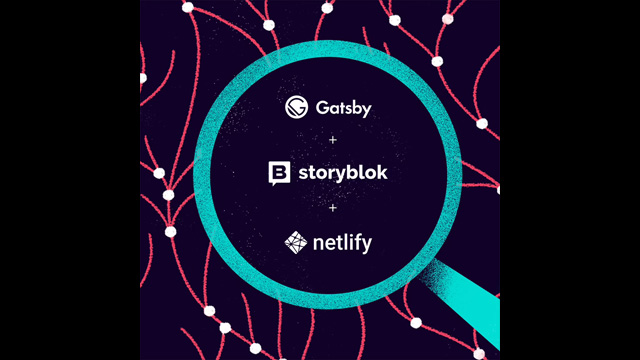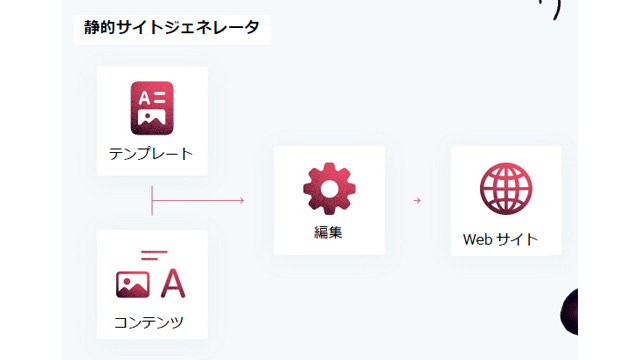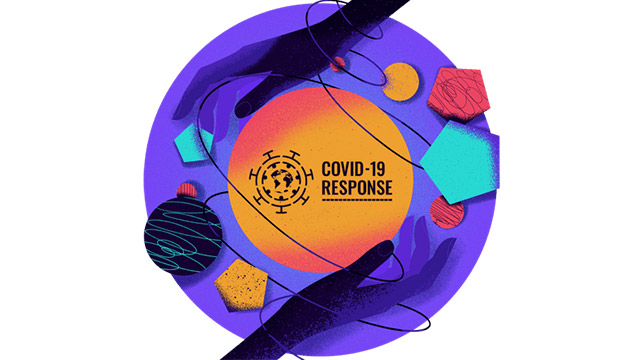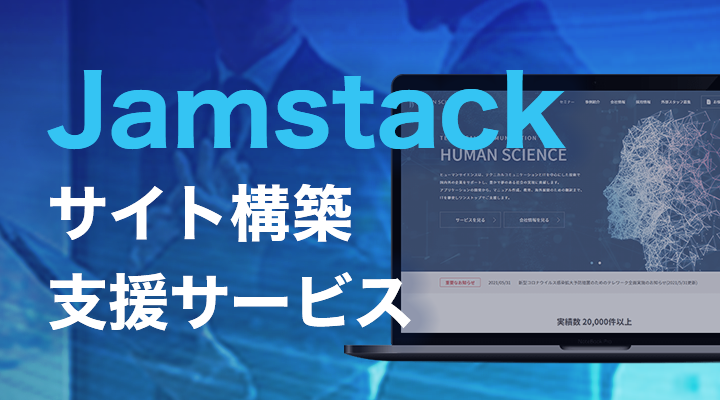This article is a translation of a blog post from the Polish development company Bejamas.
Original text: https://bejamas.io/blog/jamstack/
What is Jamstack? [Part 2]
Jamstack is not about specific technologies. It is a modern web development architecture that utilizes CDNs and decoupled services.
 Author: Denis Kostrzewa
Author: Denis Kostrzewa
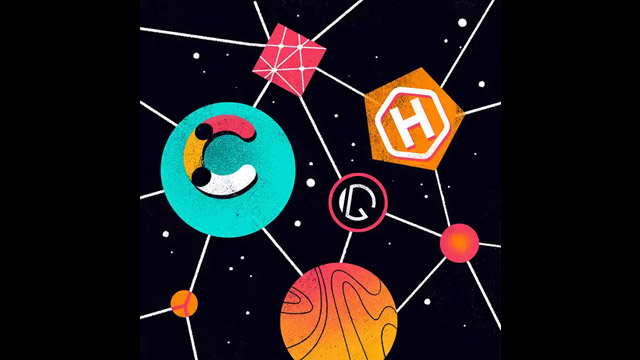
- Table of Contents
1. Limitations of Jamstack
Jamstack is revolutionary in many ways. It allows you to create websites that are far better than those of competitors. However, like other technologies, it also has some limitations.
1-1 Jamstack is not for beginners
To use Jamstack, general web development knowledge or specific knowledge (such as an interest in React or Vue) is required. However, there are many tools available recently, making it easy for anyone to create end products, websites, and applications.
1-2 Use of User-Specific Data and/or Real-Time Data
There are also data that cannot be pre-generated, such as user-specific data and real-time data (like names, avatars, and data of logged-in users). Whether to use Jamstack for projects requiring this data largely depends on the use case. In such cases, web development companies like Bejamas have a wealth of knowledge.
For example, it is possible to build a clone of Twitter or a data analysis dashboard, but the original benefits of Jamstack cannot be fully utilized. However, in projects that simply use that kind of data, such as e-commerce, retrieving the requested information from the API is not that difficult. Furthermore, there are other advantages to Jamstack as well.
1-3 Complexity of APIs
The complexity of APIs is often cited as a disadvantage. However, this is also true for the ecosystem of WordPress plugins. One difference is that WP plugins can break a live website, whereas as long as data is being retrieved during the build, APIs do not break the live website.
1-4 Long Build Process
One of the major constraints is the construction time of websites with a large number of pages. As already explained, if even a small change is made to one page, a complete reconstruction of the entire website is required. If you are running a website with thousands of pages, this can be a significant disadvantage, but this issue has already been resolved.
With incremental (differential) builds, you can rebuild only the relevant pages, that is, the pages that have been changed. For example, Gatsby and NextJS can already be built this way.
1-5 Handling Dynamic Parts (Serverless Functions)
Developing with Jamstack does not mean eliminating the backend. The key aspect of the Jamstack approach is serverless functionality. Recently, it has become easier to execute serverless functions at the edge, just as static files are delivered via CDN.
In other words, it means that the backend of websites and applications can be expanded almost infinitely without maintenance, allowing users to retrieve backend data from the nearest geographical data center.
2. When to use Jamstack?
While it may be tempting to say that Jamstack is for everyone, that is not the case. It is advisable to identify the advantages and disadvantages in relation to your business goals, and consult with your finance team based on Jamstack case studies. This is a way to start thinking about the best approaches commonly used in web development. Alternatively, it is also recommended to speak with an expert.
However, there are still a few points that should be noted.
If you are not concerned about performance or cache management, or if you are satisfied with no-code solutions like Webflow, it is better not to develop with Jamstack.
If your team is familiar with WordPress and has trained the team to leverage new technologies, but you want to minimize the possibility of wasting time and money without achieving results, then let's avoid using Jamstack.
If the project relies on many users or real-time data, it is better not to use Jamstack.
Finally, migrating past projects to Jamstack may not make much sense. However, it might be worth considering Jamstack when starting something new.
On the other hand, if you want to improve your website's performance, make it faster for users, and make it safer while keeping developers happy, we recommend Jamstack!
3. Getting Started with Jamstack

Up to this point, I think it was difficult to digest everything at once without a Jamstack, but I will introduce the latest tools that will help you build a Jamstack website step by step.
Jamstack is a development approach centered around the front end. Generally, for those who are new to web development and thinking of starting with Jamstack, it is essential to first acquire skills in JavaScript and APIs, so let's make sure to learn those.
To create a Jamstack website, please use your preferred JavaScript framework (React, Vue, Angular) or a static site generator, and utilize a headless CMS for content management, along with a platform for hosting and deployment.
3-1 Static Site Generator
A static site generator is a tool for building static HTML pages from input files. It retrieves content from a CMS or other sources, applies the selected template, generates the structure of static HTML files, and ultimately displays a web-ready page. Currently, there is a vast number of SSGs suitable for almost every programming language. For more details on the available options, please refer to the static site generator guide.
3-2 Headless CMS
Traditional CMSs like WordPress and Drupal are hosted and serve content each time a page is requested. In contrast, headless CMS separates content management from the front end and back end. This allows for content delivery across websites and apps, enabling content reuse from various front ends.
Most available headless CMSs are compatible with the front-end technologies you are using. We believe we can convey how important and useful they are in any of our case studies. We will share experiences with Contentful, Storyblok, Sanity, Forest, and others.
3-3 API
As mentioned earlier, the dynamic parts of the website are handled by APIs, and it is also possible to develop your own solutions.
Today's API ecosystem supports almost everything, from payment processing to form data handling, user authentication, real-time data storage and retrieval, and handling e-commerce tasks.
3-4 Deployment Platform
Once you have built your Jamstack website or application using the above tools, the next step is to look for its home. Nowadays, hosting solutions and CDNs provide everything necessary to deploy modern websites.
Let's take a look at some of our favorite solutions like Vercel and Netlify. Alternatively, there are traditional options like Firebase and AWS (all of which are featured in our Jamstack hosting article).
The greatest appeal of Jamstack is the ability to combine tools for hosting, building, content management, and feature additions in any way you like, allowing you to create the best stack for your current project.
4. What's next after Jamstack?
Jamstack is not the perfect solution for every use case. However, the ecosystem is rapidly evolving, and many of the tools and resources already available are pushing the limits of what can be done with static websites.
A significant transition from the backend to more powerful and effective frontend development is already taking place.
We are on the path to creating a better internet.
5. Links and Resources
To gain a deeper understanding of the rapidly evolving world of Jamstack, please check the following links and resources. (English)
Home of the Global Jamstack Community – https://jamstack.org/
The Origin Story of JAMstack – https://www.heavybit.com/library/podcasts/jamstack-radio/ep-2-the-jamstack-origin-story/
Jamstack Book – https://www.manning.com/books/the-jamstack-book
Where are the Jamstackers? - https://dev.to/cookieduster_n/jamstack-resources-where-do-jamstackers-hang-out-3bfa
A Simple Tutorial on Jamstack – https://www.youtube.com/watch?v=Y8PXMbr0Kqo
Add dynamic and asynchronous features to JAMstack sites – https://www.smashingmagazine.com/2019/12/dynamic-async-functionality-jamsstack-websites/
Conversation about JAMStack – https://anchor.fm/contentful-creators/episodes/E18-A-Conversation-about-JAMStack-Brian-Rinaldi-ehv741-A-Conversation-about-JAMStack-Brian-Rinaldi-ehv741
Guillermo Rauch, the founder and CEO of Vercel, talks about the post-Jamstack era of hybrid frameworks like Next.js and Nuxt – https://youtu.be/KgTW0xfyr9A?t=3815
Jamstack Course by Phil Hawksworth – https://www.youtube.com/watch?v=A_l0qrPUJds
Bejamas Service Introduction Materials
This is information about the latest web development method, Jamstack, and its developer, Bejamas.
Human Science collaborates with Bejamas to support improvements in manuals, FAQs, corporate websites, and more.
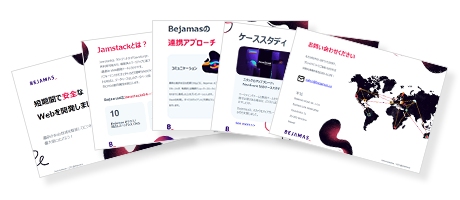
- What is Jamstack? What can be achieved?
- Technology Used by Bejamas
- Services offered by Bejamas
- Bejamas Collaboration Approach
- Client Testimonials
- Case Study





